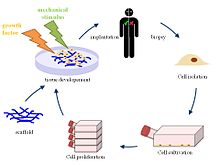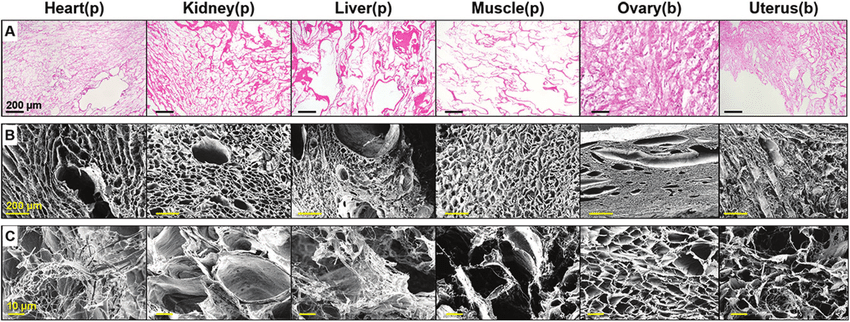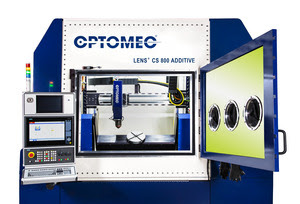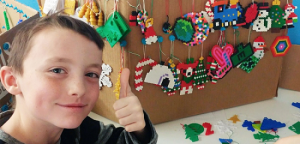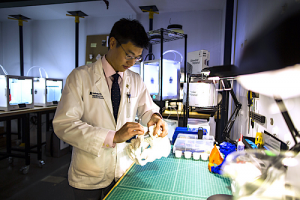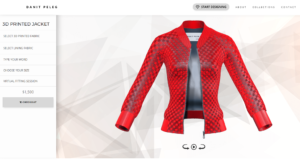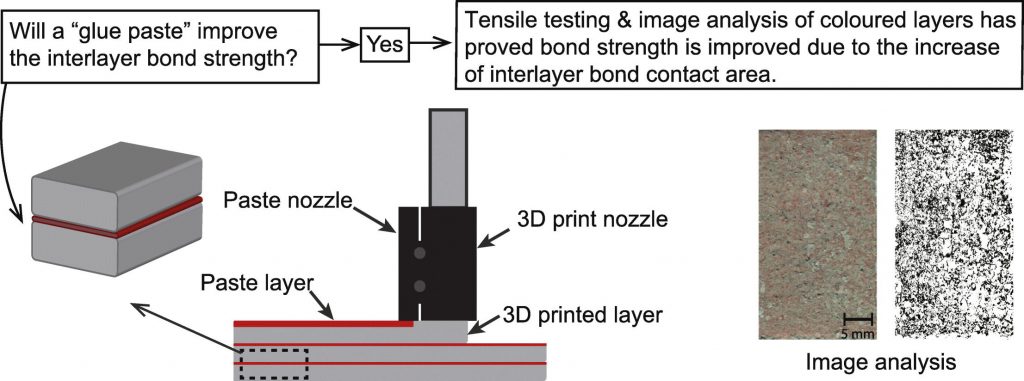Today we will be learning about one of the more complex sounding materials within bioprinting. Decellularized extracellular matrices are important within bioprinting processes. That term itself seems like a mouthful. Do not fret. We will break it down into simple parts, and it will be manageable to understand.
Firstly let us define what it means to be decellularized. Decellularization is the process used in biomedical engineering to isolate the extracellular matrix (ECM) of tissue from its inhabiting cells, leaving an ECM scaffold of the original tissue, which can be used in artificial organ and tissue regeneration.
The extracellular matrix is a three-dimensional network of extracellular macromolecules, such as collagen, enzymes, and glycoproteins, that provide structural and biochemical support of surrounding cells. The composition of an ECM varies between multicellular structures. Typically cell to cell communication occurs within an ECM, as well as cell differentiation. Cell differentiation refers to the process of how a cell changes from one cell type to another.
Most connective tissues within animals consist of a type of ECM. Collagen fibers and bone mineral comprise the ECM of bone tissue; reticular fibers and ground substance comprise the ECM of loose connective tissue; and blood plasma is the ECM of blood. Reticular fibers refer to a type of fiber in connective tissue composed of type III collagen secreted by reticular cells. Reticular fibers crosslink and form a fine network. This network is leveraged as a mesh in soft tissues such as liver, bone marrow, and the tissues and organs of the lymphatic system. Ground substance refers to an amorphous gel-like substance in the extracellular space that contains all components of the extracellular matrix except for fibrous materials such as collagen and elastin.
When we are within the scope of bioengineering, we are using decellularized extracellular matrices for the purpose of organ and tissue creation. An ECM has great physical properties due to its ability to vary in terms of stiffness and elasticity. This range allows an ECM to be used for soft brain tissues as well as hard bones. The elasticity and stiffness of an ECM is dependant on collagen and elastin concentration within the substance. ECM’s have the ability to regulate cellular processes extensively due to their flexibility in biomechanical properties.
An important note to understand is that decellularized extra matrices are used because they are separated from cells within the body. An ECM is naturally within the body, but a dECM is what we use outside of the body to create bioprinting materials.
The benefit of using a decellularized extracurricular matrix (dECM) is the fact that it is abundant within the body. This means that it is likely to not be rejected when repurposing this material for other biological usages in the body (this refers to us using ECM’s for bioprinting purposes for tissue creation and or organ creation). We can then increase or decrease levels of collagen or elastin within this material to repurpose it quickly for a different usage within the body. So we can effectively take some ECM from a pig and repurpose it for brain tissue. Also one must understand that ECM’s can be combined with stem cells to regrow organs as well. It also allows a smooth immune system response due to it being a substance already found within the body.
The biggest problem with ECM’s are that they have poor mechanical strength. These are typically soft tissue based materials on their own. To create a strong load bearing tissue, it is important to strengthen this material as well as combine it with synthetic biology methods to get the best results. DECM’s can be combined with synthetic polymers through electrospinning to create hybrid scaffolds. Electrospinning is a fiber production method which uses electric force to draw charged threads of polymer solutions or polymer melts up to fiber diameters in the order of some hundred nanometers. Hybrid scaffolds refer to synthetic biology and dECM’s to create dual property scaffolds.
dECM’s are useful for in vivo and in vitro purposes. dECM is particularly of interest for regenerative tissue in vivo because of how it most effectively captures the complex array of proteins and many other matrix components that are found in native tissue, providing ideal cues for regeneration and repair. In vitro, dECM’s are used for general tissue growth and experimentation. This is the best material we have discussed thus far in the series in terms of in vivo practicality for bioprinting.
To create a scaffold through bioprinting we would apply many of the techniques we have already discussed within this series. We can convert a dECM into a bioink or hydrogel which may be extruded for 3D bioprinting purposes. We can also apply different common 3D printing technologies such as SLA printing with this type of material. It is most common to use extrusion as this material is readily made in an aqueous state. Something to ponder in the future is turning this material into a non aqueous material. This can lead to possible developments within how we can use the material as a whole.
As we have taken an indepth look at dECM’s, we understand that it is a burgeoning material within the bioprinting industry. It is important to understand how we can leverage dECM’s in the future with other polymers in order to go more in depth with the uses. We currently focus on soft tissue applications for dECM’s. More research needs to be done in order for us to unlock the potential of this material. We will have a follow up article as well on electrospinning and its relevance for bioprinting as a whole.
This aticle is part of a series that wishes to make bioprinting more accessible. It starts with bioprinting 101, Hydrogels, 3D Industrial Bioprinters, Alginate, Bioinks, Pluronics, Applications and Gelatin.

